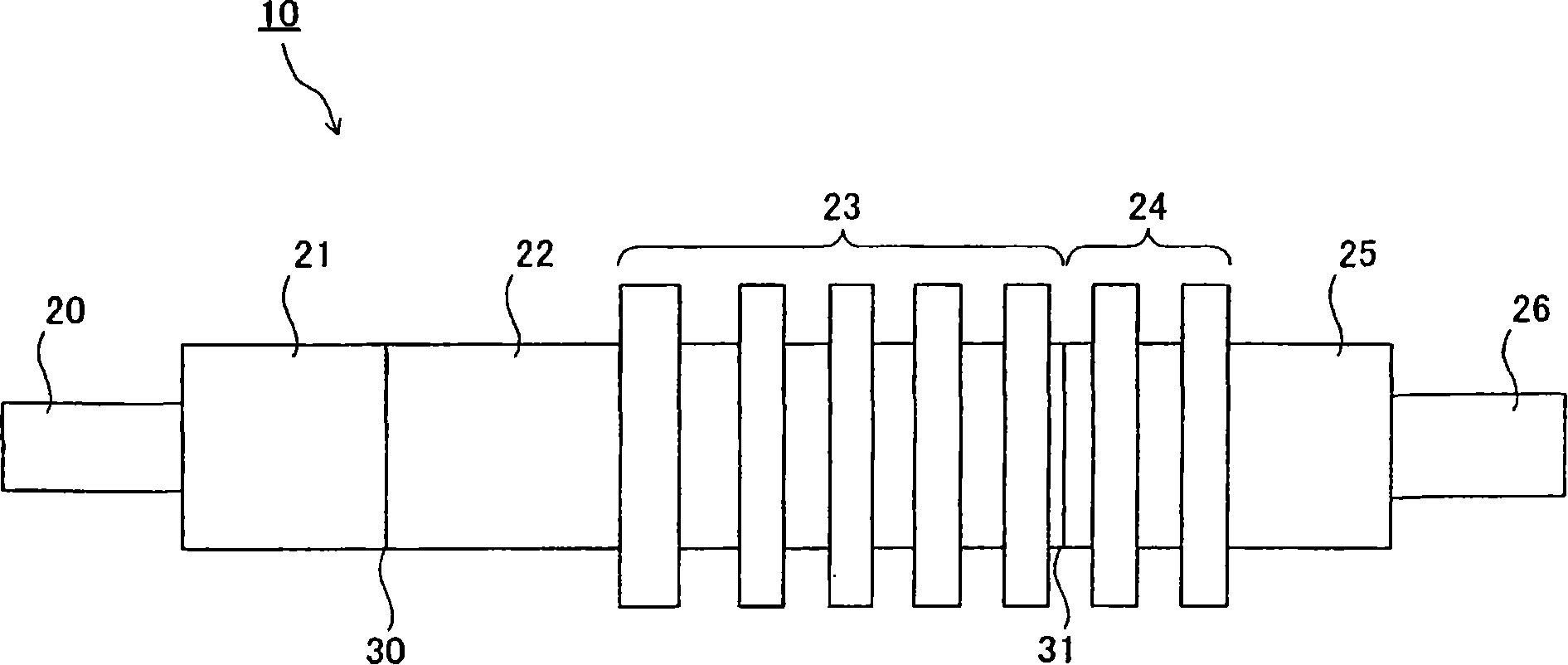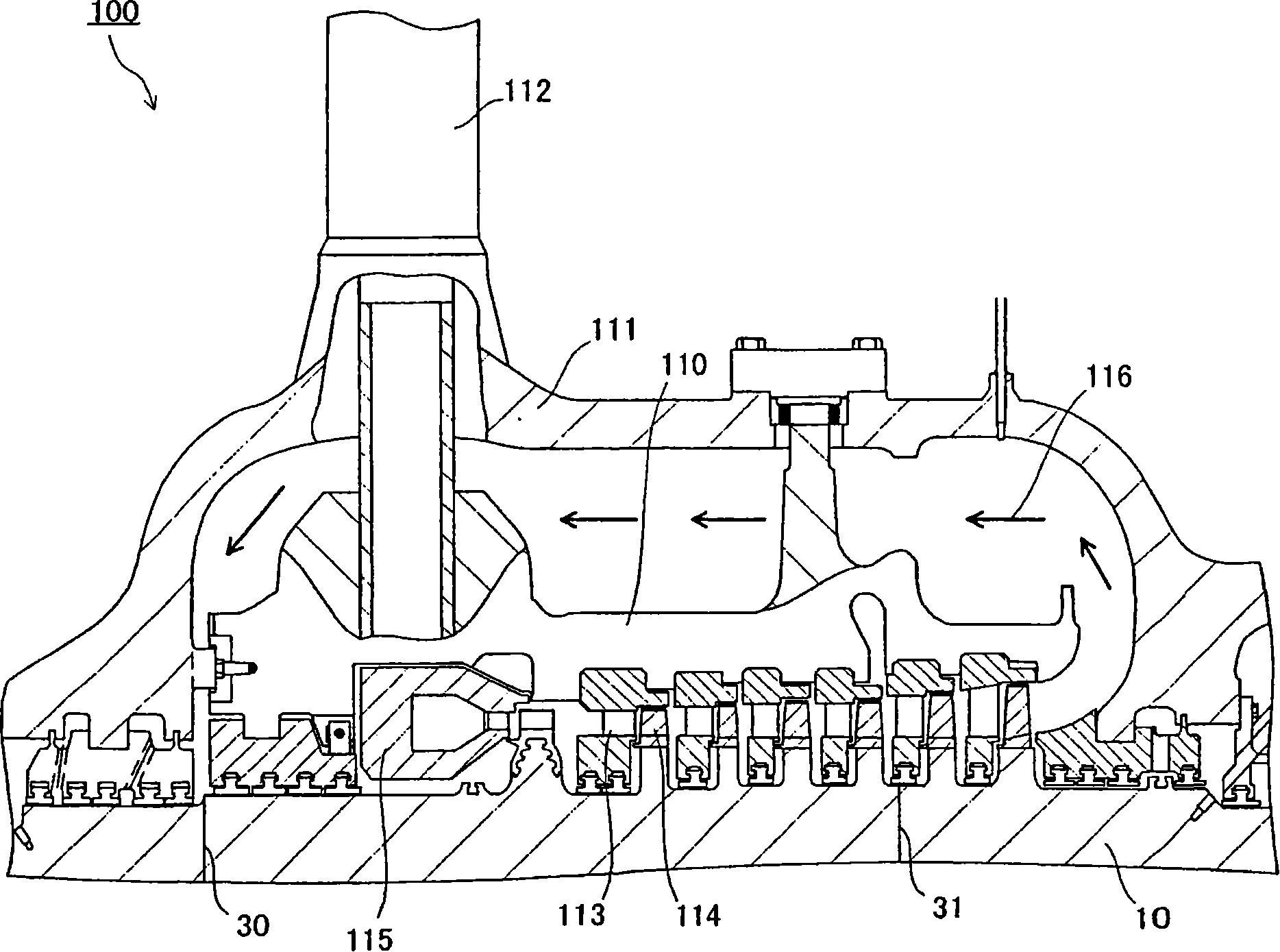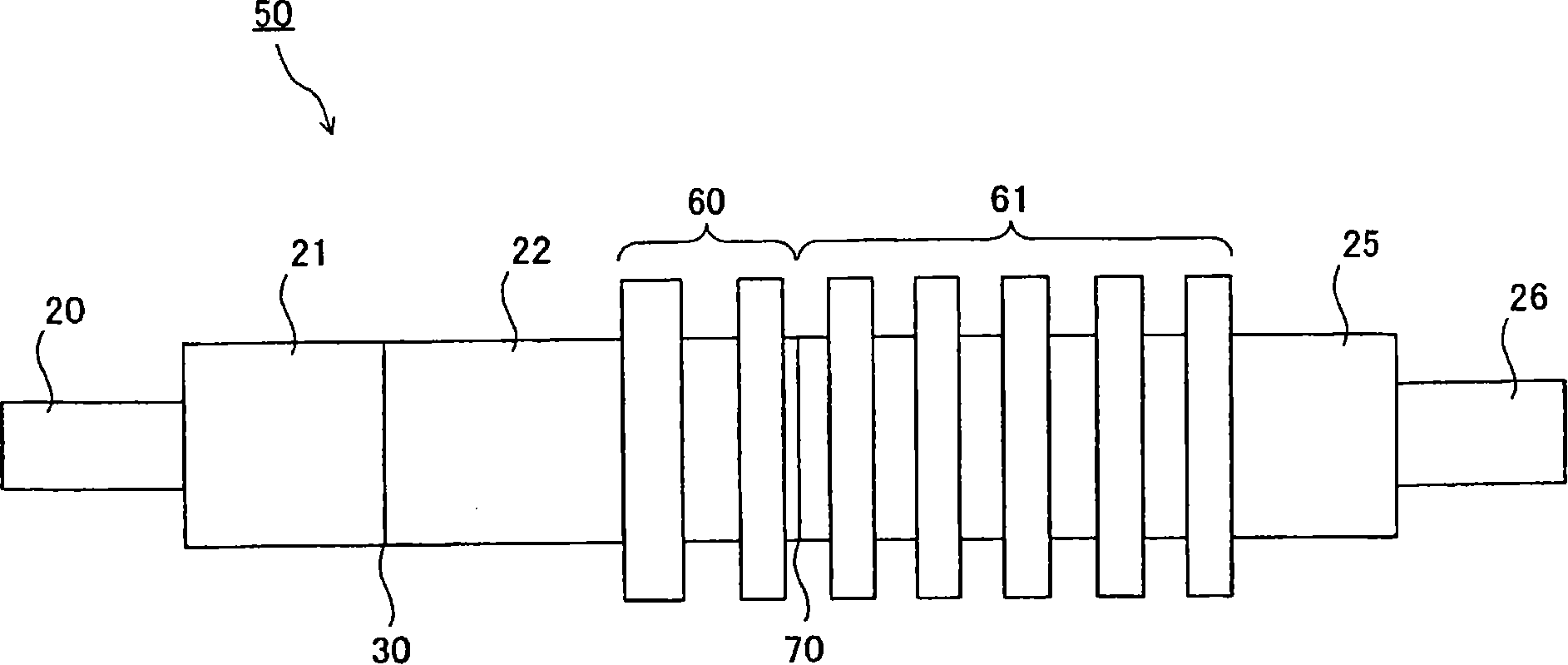Turbine rotor and steam turbine
A turbine rotor and steam turbine technology, applied in the field of steam turbines, can solve problems such as large thermal stress
- Summary
- Abstract
- Description
- Claims
- Application Information
AI Technical Summary
Problems solved by technology
Method used
Image
Examples
no. 1 Embodiment approach
[0032] figure 1 It is a plan view schematically showing the configuration of the turbine rotor 10 according to the first embodiment of the present invention.
[0033] Such as figure 1 As shown, the turbine rotor 10 includes: a front shaft 20, a front low temperature sealing part 21, a front high temperature sealing part 22, a front high temperature moving blade part 23, a rear low temperature moving blade part 24, a rear low temperature sealing part 25, and rear axle 26 .
[0034] The front shaft 20 and the front cryogenic seal 21 are integrally formed. In addition, the front high-temperature sealing part 22 and the front high-temperature rotor blade part 23 in which the rotor blades are fitted are integrally formed. Furthermore, the rear shaft 26 , the rear low-temperature seal portion 25 , and the rear low-temperature rotor blade portion 24 in which the rotor blades are embedded are also integrally formed. In addition, the front low-temperature sealing part 21 is connect...
no. 2 Embodiment approach
[0070] image 3 It is a plan view schematically showing the configuration of a turbine rotor 50 according to a second embodiment of the present invention. In addition, the same code|symbol is attached|subjected to the same component as the structure of the turbine rotor 10 of 1st Embodiment, and repeated description is abbreviate|omitted or simplified here.
[0071] Here, the configuration of the turbine rotor 50 of the second embodiment is the same as that of the first embodiment except that the configurations of the front high-temperature rotor blade portion 23 and the rear low-temperature rotor blade portion 24 of the turbine rotor 10 of the first embodiment are changed to provide a cooling mechanism. The configuration of the turbine rotor 10 of the first embodiment is the same. Such as image 3 As shown, the turbine rotor 50 includes: a front shaft 20, a front low temperature sealing part 21, a front high temperature sealing part 22, a front high temperature moving blade...
Embodiment 1 and comparative example 1
[0084]Here, the Ni-based alloy and CrMoV steel used in the turbine rotor of the present invention are used, and the Ni-based alloy and CrMoV steel are deposited to form a turbine rotor, which is assumed to be Test Sample 1 (Example 1). The Ni-based alloy and 12Cr steel used in the dissimilar welded turbine rotor were deposited on the Ni-based alloy and 12Cr steel to form the turbine rotor, which was assumed to be the test sample 2 (comparative example 1), and calculated in the respective Thermal stress at the junction.
PUM
| Property | Measurement | Unit |
|---|---|---|
| diameter | aaaaa | aaaaa |
| length | aaaaa | aaaaa |
| thermal stress | aaaaa | aaaaa |
Abstract
Description
Claims
Application Information
 Login to View More
Login to View More - R&D
- Intellectual Property
- Life Sciences
- Materials
- Tech Scout
- Unparalleled Data Quality
- Higher Quality Content
- 60% Fewer Hallucinations
Browse by: Latest US Patents, China's latest patents, Technical Efficacy Thesaurus, Application Domain, Technology Topic, Popular Technical Reports.
© 2025 PatSnap. All rights reserved.Legal|Privacy policy|Modern Slavery Act Transparency Statement|Sitemap|About US| Contact US: help@patsnap.com



